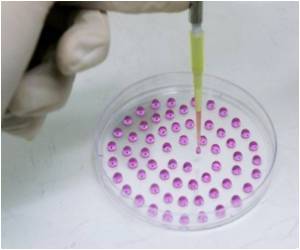For the first time, Oregon Health and Science University scientists have grown liver stem cells in culture.

But no lab in the world has been successful in identifying and growing liver stem cells in culture -- using any available technique - until now.
Now, physician-scientists in the Pape Family Pediatric Research Institute at OHSU Doernbecher Children's Hospital, Portland, Ore., along with investigators at the Hubrecht Institute for Developmental Biology and Stem Cell Research, Utrecht, Netherlands, have described a new method through which they were able to infinitely expand liver stem cells from a mouse in a dish.
"This study raises the hope that the human equivalent of these mouse liver stem cells can be grown in a similar way and efficiently converted into functional liver cells," said Markus Grompe, M.D., study co-author, director of the Pape Family Pediatric Research Institute at OHSU Doernbecher Children's Hospital; and professor of pediatrics, and molecular and medical genetics in the OHSU School of Medicine.
In a previous Nature study, investigators at the Hubrecht Institute, led by Hans Clever, M.D, Ph.D., were the first to identify stem cells in the small intestine and colon by observing the expression of the adult stem cell marker Lgr5 and growth in response to a growth factor called Wnt.
They also hypothesized that the unique expression pattern of Lgr5 could mark stem cells in other adult tissues, including the liver, an organ for which stem cell identification remained elusive.
Advertisement
The scientists were able to grow these liver stem cells exponentially in a dish - an accomplishment never before achieved - and then transplant them in a specially designed mouse model of liver disease, where they continued to grow and show a modest therapeutic effect.
Advertisement
The research has been published in the journal Nature.
Source-ANI















